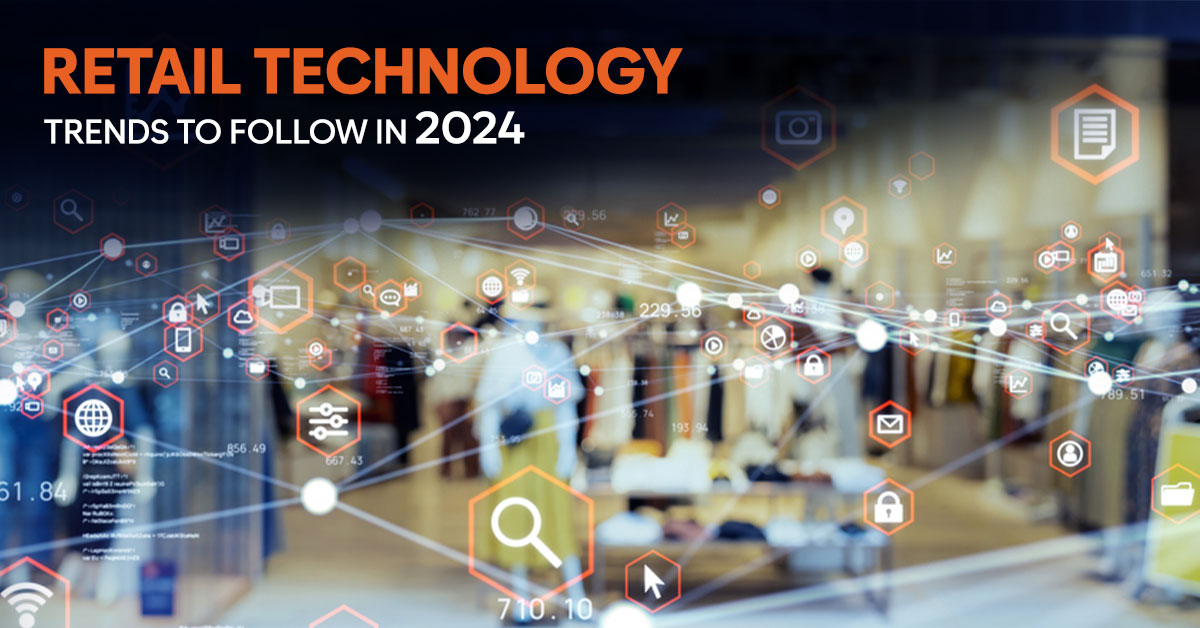The retail industry continues to evolve rapidly, driven by increasing consumer demands and technological advancements. Keeping up with these changes is crucial for businesses to stay competitive and meet customer expectations. In 2024, several key technology trends are set to transform the retail landscape. Let’s explore these trends and how they can benefit your business.
1. Artificial Intelligence Revolutionizing Retail
AI in Inventory Management
Artificial intelligence is reshaping how retailers manage their inventory. By analyzing consumer spending trends and using demand forecasting models, AI can predict the optimal times for replenishing products. This reduces excess stock and timely restocking, ultimately optimizing inventory levels.
Generative AI in Retail
Generative AI, such as Chat-GPT, is being utilized beyond marketing copy. Retailers like Walmart use generative AI chatbots to negotiate with suppliers and create efficient store layouts. This technology helps automate complex tasks and improve operational efficiency.
Personalized Shopping Experiences
AI-driven data analytics enable retailers to personalize shopping experiences. Businesses can generate unique messages and offers tailored to individual customers by tracking customer behaviors. Techniques like collaborative and content-based filtering enhance product recommendations delivered through various channels such as emails, mobile apps, and targeted ads.
Decline of Advanced Self-Checkout Technologies
Despite the initial excitement around self-checkout technologies, some innovations are losing traction. For example, Amazon is scaling back its “just walk out” model due to high costs and limited effectiveness. However, machine vision-based self-checkout applications, like smart vending machines, still hold promise on a smaller scale.

2. Omnichannel Retail Experiences
Buy Online, Pick Up In-Store (BOPIS)
BOPIS continues to gain popularity, combining the convenience of online shopping with the immediacy of in-store pickup. Retailers must optimize inventory tracking and order fulfillment processes to enhance this service. Addressing challenges like “double tappers” can improve customer satisfaction and loyalty.
Innovative Point of Sale (POS) Systems
Modern POS systems synchronize real-time data across online and offline stores, offering a centralized view of inventory. Accepting various digital payment methods, such as QR codes, mobile payments, and cryptocurrencies, reduces friction at the point of sale and enhances the overall shopping experience.
3. Indoor Positioning Systems (IPS)
Indoor positioning systems (IPS) are becoming more prevalent, helping customers navigate large stores and shopping centers. While the technology isn’t yet accurate enough to guide customers to specific products, it can direct them to the right departments. Retailers like Target use Bluetooth beacons to provide in-store maps via mobile apps.
4. Augmented Reality (AR) Shopping Experiences
Virtual Try-On Solutions
AR technology bridges the gap between digital and physical shopping experiences. Virtual fitting rooms allow customers to see how products, like apparel and furniture, will look before purchasing. IKEA’s AR app, for example, uses LiDAR technology to create detailed room layouts, enhancing the shopping experience.

AR for Planogram Setup
AR can assist merchandisers in setting up shelves according to planograms. By overlaying a 3D model of the planogram onto the physical shelf, AR helps ensure accurate product placement. This technology is especially useful for maintaining consistent store layouts and enhancing merchandising quality.
5. Demand Forecasting
AI-driven demand forecasting models help retailers optimize inventory, reduce costs, and increase revenue. These models accurately predict product demand by analyzing historical sales data and factors like seasonality and geography. This leads to better inventory management, cost savings, and a competitive market advantage.

6. Chatbots and Virtual Shopping Assistants
Advanced chatbots powered by AI are transforming retail customer service. Brands like eBay and Sephora use chatbots to provide personalized recommendations, order tracking, and customer support. Developing custom chatbots tailored to specific business needs can enhance customer engagement and streamline operations.
7. Voice Commerce
Voice commerce is gaining traction, allowing customers to place orders and interact with retailers using voice commands. Walmart’s Voice Ordering enables customers to add products to their cart using smart speakers. Integrating voice assistants with AR-capable devices, like smart mirrors, can further enhance the shopping experience.

How to Get Started with Retail Technology Trends
- Artificial Intelligence: Hire AI engineers to implement AI solutions and create a clear AI strategy.
- Omnichannel Strategy: Invest in a unified commerce platform and upgrade POS systems.
- Indoor Positioning: Map store environments accurately and choose the best positioning approach.
- Augmented Reality: Determine AR objectives and enlist experienced AR developers.
- Demand Forecasting: Collect sales data and work with data scientists to develop forecasting models.
- Chatbots: Define chatbot functionalities and collaborate with software engineers for development.
- Voice Commerce: Evaluate voice assistant platforms and build voice-enabled applications.
Embrace these trends to stay ahead in the competitive retail market and meet the ever-evolving demands of consumers.
Conclusion
In 2024, integrating advanced technologies like AI, AR, IPS, and voice commerce will continue revolutionizing the retail industry. Retailers must embrace these trends to improve customer experiences, optimize operations, and stay competitive. By strategically implementing these technologies, businesses can achieve significant growth and success in the ever-evolving retail landscape.





